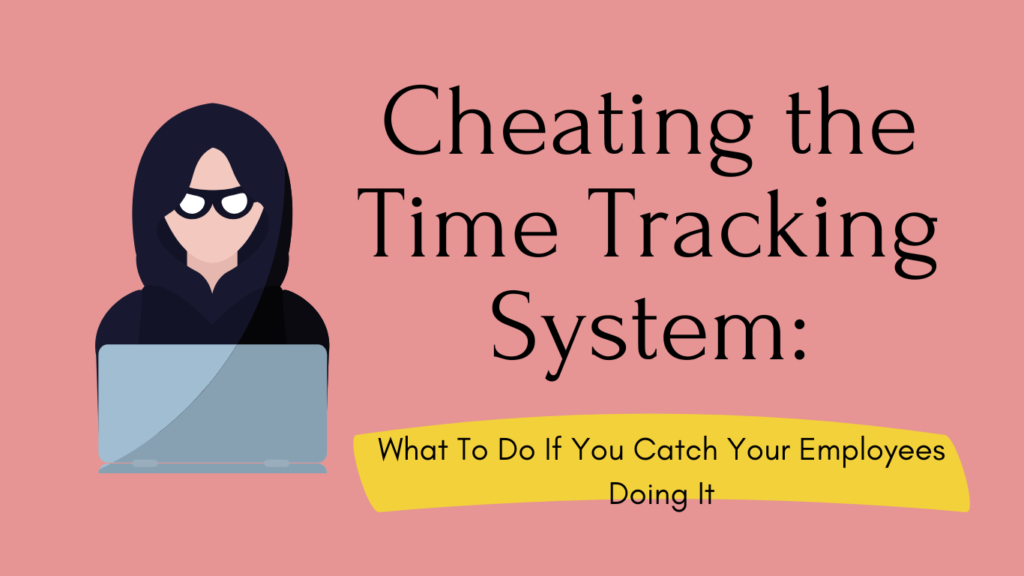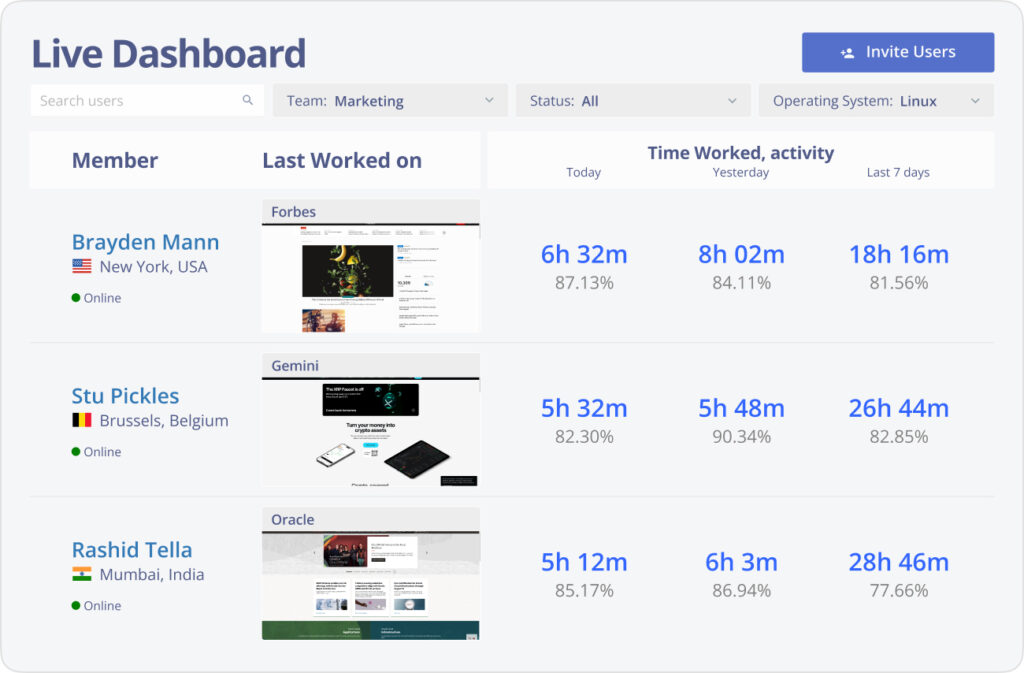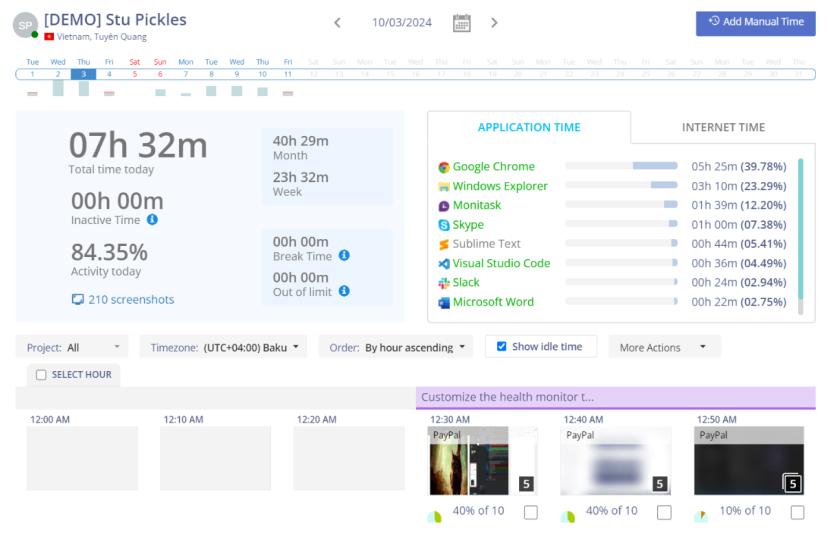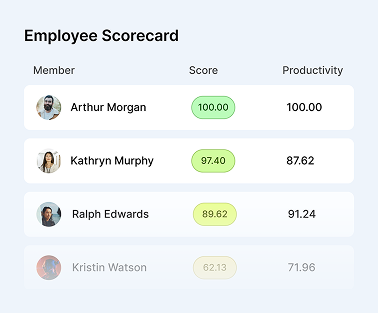Cheating the Time Tracking System: What To Do If You Catch Your Employees Doing It
With most businesses going remote or hybrid, time theft has become a massive problem in today’s workplaces. Employees often find ways to cheat the time tracking system to get more hours than they have worked. This can lead to lost revenue for the company and even be considered fraud!
Yet, since we are experts on the matter, don’t fret! We are helping you; this blog post will discuss what time theft is and how to stop it. We will also provide tips on preventing your employees from cheating the time tracking system in the first place!

Workplace Cheating: Patterns, Red Flags, and Consequences
Before creating time-tracking tools, employees were already looking for ways to cheat time at work. This has been an ongoing issue in the workplace for as long as time itself! The most common way to cheat time, even before time-tracking tools were implemented, was through taking long lunch breaks or coffee breaks.
While some of these might seem harmless, they can add to significant losses for the company. Time theft costs businesses billions of dollars every year! According to the California Restaurants Association, 95% of companies in the U.S. suffer from some level of time theft. Time cheating can cost up to 7% of the annual payroll, translating into $70,000!

This is a massive problem for any business, as time theft not only leads to lost revenue but can also lead to decreased morale among employees. After all, if some employees are cheating at work, it’s unfair to those working hard and playing by the rules. There are many ways employees can cheat the time-tracking tools. Let’s review some of them!
Most Common Ways to Cheat Time-Tracking Tool and How to Prevent It
Buddy Punching
Buddy punching, the act of one employee covering for another by marking them as “present” during office hours, is a common form of time theft in the workplace. Not only does buddy punching cost companies money, but it also creates an unfair and unbalanced work environment.
And, not only does this mean that the company is paying for hours that the employee didn’t work, but it also means that the time-tracking system is inaccurate. This can lead to big problems down the line, as the company won’t be able to track employee productivity properly. Fortunately, there are steps that can be taken to prevent buddy punching:
- One solution is implementing a digital time-tracking tool that requires employees to clock in using biometric data, such as fingerprints or face scans.
- You can also use GPS tracking to track employee locations. This way, you can be sure that employees only clock in when they are at the office or job site.
These options can eliminate buddy punching and ensure accurate recording of employee time. On top of this, managers can actively monitor attendance patterns and promptly address any discrepancies. By addressing and preventing buddy punching through modern technology solutions, businesses can create a fair and productive work environment!
Maximize productivity of your business
Track employee productivity and simplify work with them
Automating Mouse Movement
In today’s world, time-tracking tools are getting more and more sophisticated. Yet, some clever employees have found a way to cheat the system by automating their mouse movement! What does this mean? They use a tool to move their mouse around the screen even when not working.
It looks like they’re active when they’re really not. This can be a big problem, as the company pays for hours the employee isn’t working. Fortunately, some steps can be taken to prevent this type of time theft:
- First, managers should regularly monitor employee activity and look for suspicious patterns. If an employee’s mouse is moving around even when they’re not working, this is a red flag that they might be trying to cheat the system.
- Another solution is using a tool that tracks employee activity and flags suspicious behavior. This can help managers catch time cheaters before they cost the company money!
You may be wondering which tool is the best: Monitask! This software is a valuable tool for preventing time theft in the workplace. The software allows employers to track employee hours and attendance, giving an accurate record of when each employee is present at work.

Monitask also offers features such as activity tracking, allowing managers to see exactly how employees spend their time during the workday. This level of oversight can deter employees from cheating on their timesheets or taking extended breaks without approval.
In addition, Monitask’s time-tracking capabilities allow for more efficient payroll processing and can help prevent overpaying employees for the hours they didn’t work. Implementing Monitask can positively impact a company’s bottom line and ensure that employees are held accountable for their time at work.
Hiding Idle Time
Hiding idle time is another common form of time theft. Essentially, employees will try to hide the fact that they’re not working by keeping their computer screens open even when they’re not working. This can be a big problem because it means the company is paying for hours the employee isn’t working. Fortunately, some steps can be taken to prevent this type of time theft:
- Managers should regularly monitor employee activity and look for any suspicious patterns. If an employee’s computer screen is open even when they’re not working, this is a red flag that they might be trying to cheat the system.
- Another way to combat this issue is to require employees to use a password-protected screensaver. That way, if an employee steps away from their desk, their screen will automatically lock, and they’ll need to enter a password to unlock it. This will prevent employees from being able to hide idle time.
A Second Monitor
If an employee has a second monitor, they can open up a movie or show on one screen while continuing to appear to work on the other. This is another form of time theft that can be difficult to catch. Managers should be on the lookout for any suspicious patterns in employee behavior. Any drop in productivity, screenshot discrepancy, or low work performance could indicate something is happening.
Predicting Screenshots
It’s also important to be aware that sometimes tracking software takes screenshots of employee activity. This means that employees can’t simply leave their computers on and do something else because the screenshot will show that they’re not actually working.
Some employees may try to get around this using a program that blocks or hides the screenshot function. It’s essential to be aware of this possibility and monitor employee activity for any signs of this happening. If you notice that an employee’s screenshots are frequently blank or have strange patterns, this could be a sign that they’re trying to cheat the system.

However, you can prevent this by switching to Monitask, as in this software, you can set screenshots at random intervals, so employees will never know when they’re being monitored! Monitask only monitors when employees clock in. No spying, just transparency!
Using Artificial Intelligence
In recent years, some employees have turned to artificial intelligence to game the system and cheat time tracking tools. They use AI-powered software to mimic their behavior and make it appear like they are actively using their computers during work hours, when in reality, they may be taking extended breaks or leaving early. However, there are ways to prevent this type of cheating:
- One option is investing in more advanced time-tracking software to detect abnormal patterns and alert managers.
- Another solution is implementing random spot checks with employees’ supervisors, ensuring everyone is fair and accountable for their time at work.
How to Avoid Employees Cheating at Work
It’s important to remember that employees have a shared responsibility in maintaining fair and ethical work practices, and proactive steps like these can help create a positive work culture for everyone. Even though there are many ways to cheat a time tracking software, it’s essential to be aware of these methods and to take steps to prevent them from happening. Yet, it is also essential to take into account some other guidelines.
Don’t Ignore Minor Infractions
If you catch an employee cheating the time tracking system, it’s vital to take action. Ignoring minor infractions can lead to more significant problems down the road. It’s also important to be consistent in how you handle time-tracking violations. If you let one employee off with a warning, you need to do the same for all other employees. Otherwise, you risk creating a hostile work environment.
Consider the Consequences
Before taking any disciplinary action, it’s essential to consider the consequences. Firing an employee for time theft can be difficult and may not be the best course of action. Instead, consider giving the employee a warning or placing them on probation. It’s also important to have enough evidence to support your claims. If you have concrete evidence, it may be easier to take disciplinary action.
Clear Time Theft Policies
Clear theft policies should be clearly written and communicated to all employees. Employees should know what is considered time theft and the consequences for violating the policy. Time theft policies should also be regularly reviewed and updated as needed. As new methods of time theft are discovered, the policy should be updated to reflect this.
Set Clear Expectations from the Beginning
Set clear expectations from the very beginning, and be sure to communicate them to all employees. If you have a time tracking system, ensure everyone understands how it works and how to use it properly. If there are any questions, take the time to clear them up thoroughly.
Time theft often occurs when employees feel like they’re being micromanaged. Employees who think they’re constantly being monitored may be more likely to cheat the system. Instead of micromanaging, try to give employees more autonomy.
Show Trust in Your Staff
Showing trust in your staff is one of the most effective ways to prevent time cheating. By creating a culture where employees feel that their work is valued and trusted, they are less likely to feel the need to try and cheat their hours. Let them know that you trust them to do their job and that you don’t need to check on them constantly!
Showing trust in your staff helps prevent cheating and fosters a healthier and more productive workplace. Providing autonomy to your team and trusting they will perform their responsibilities allows them to take ownership of their work and reduces the temptation to cut corners.

Conclusion: Take Action
If you suspect an employee is cheating at work, it’s essential to take action. Ignoring the problem will only make it worse. Be sure to document incidents, keep track of evidence, and consult with HR or a lawyer before taking any disciplinary action.
Time theft is a serious issue, but it can be prevented by creating a culture of trust, open communication, and respect. By taking these steps, you can create a workplace where employees feel valued and motivated to do their best.
Happy, transparent, and honest time tracking!
-The Monitask Team
Frequently Asked Questions
How do you trick screen monitoring?
Screen monitoring can be used for legitimate purposes, and circumventing it can have ethical and legal consequences. Common ways to trick screen monitoring, such as red herring, mouse jigglers, or window layering, are unethical, violate trust, and could lead to disciplinary action or even job loss.
Is time tracking bad?
No, time tracking itself is not inherently wrong. It’s a valuable tool for productivity, project management, and billing. Issues may arise if misused or implemented without considering employees’ well-being and privacy. Properly implemented, time tracking can be beneficial for employers and employees.



